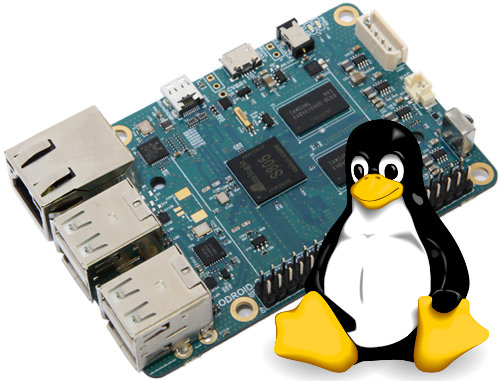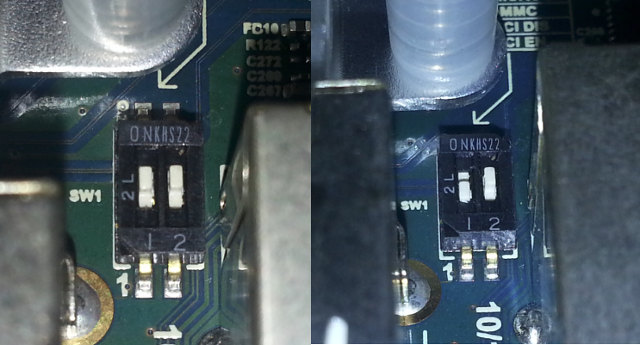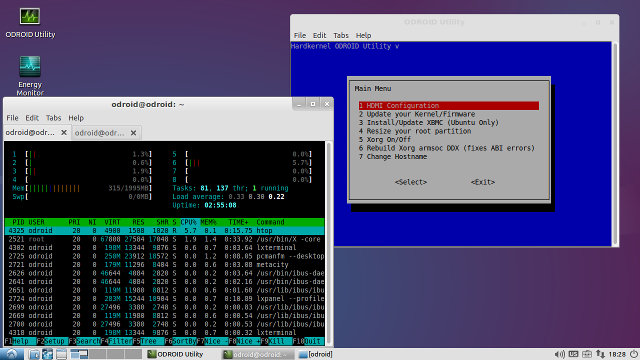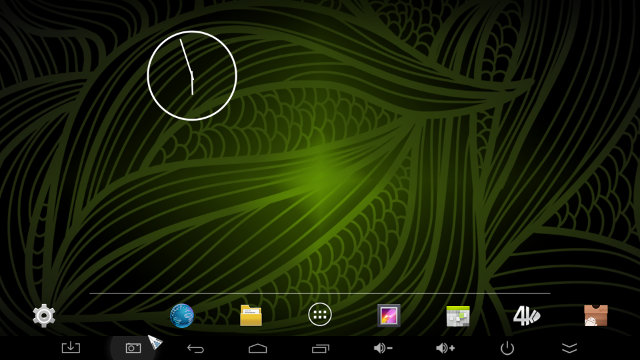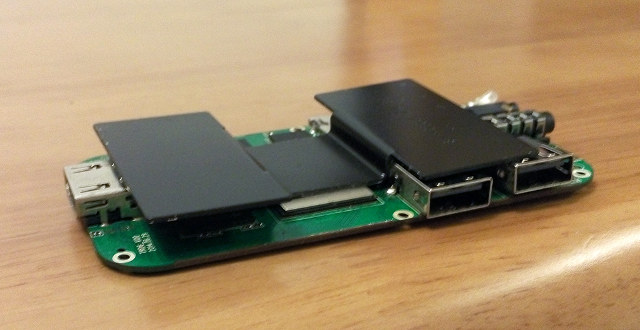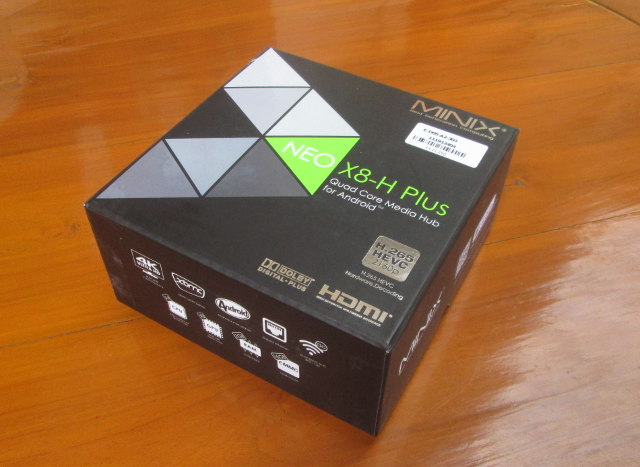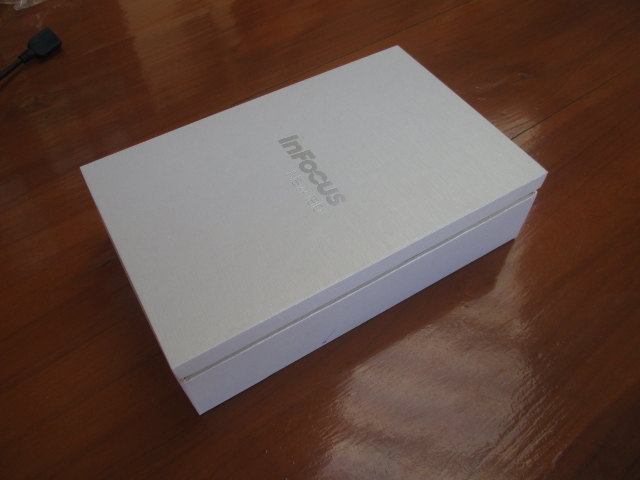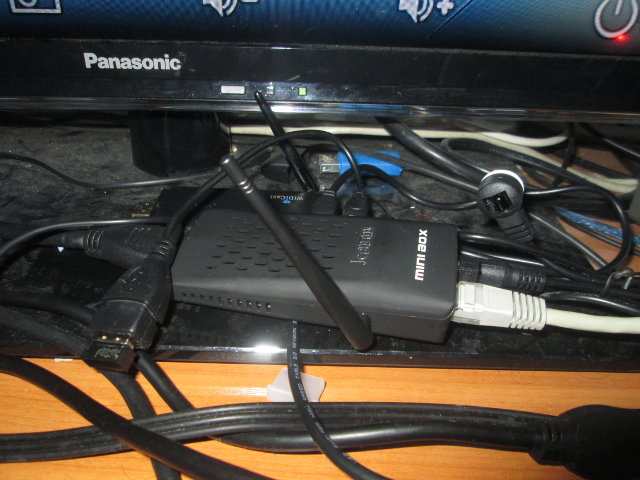Hardkernel ODROID-C1 board, a more powerful $35 alternative to the Raspberry Pi, garnered a lot of attention when it was announced last week. At the time source code was not available, but as scheduled, U-boot and Linux source code is now available, and the full Android SDL should be released on February 2015. Instructions to get the code, and build both Linux and U-boot are available on ODROID-C1 Wiki, and I’ve just given a try to Linux instructions myself to see if I would encounter any issues in Ubuntu 14.04. Download Linaro GCC 4.7 toolchain from Linaro or Odroid website. Install the toolchain. They install it on /opt/toolchain, but instead I’ve installed in ~/opt/toochain, so I don’t need superuser permissions: mkdir -p ~/opt/toolchains tar xvf gcc-linaro-arm-linux-gnueabihf-4.7-2013.04-20130415_linux.tar.bz2 -C ~/opt/toolchains/ Add the following lines to ~/.bashrc export ARCH=arm export CROSS_COMPILE=arm-linux-gnueabihf- export PATH=~/opt/toolchains/gcc-linaro-arm-linux-gnueabihf-4.7-2013.04-20130415_linux/bin:$PATH To apply change, log out and log in, or run: […]
ODROID-XU3 Lite Board Ubuntu Review – Setup, Usability, and Performance
After testing ODROID-XU3 Lite with Android 4.4, and finding a workaround to some HDMI issues, I could finally try out Ubuntu, or rather Lubuntu with LXDE instead of Unity, in Hardkernel low cost octa-core development board. I’ll start this review by explaining how to install and setup Lubuntu on the board, followed by running various program to test the system usability as a desktop computer with LibreOffice, Chromium, XBMC, and 3D graphics, and finally run some performance tests with Phoronix Test Suit, build the Linux kernel natively, and transcode a video with avconf. Setting Up Ubuntu on ODROID-XU3 Lite All firmware images for ODROID development boards, can be found on odroid.in website, and if you want Ubuntu 14.04 image, go to ubuntu_14.04lts folder, to select the latest firmware file for your board. The latest image for ODROID-XU3 (Lite) is currently ubuntu-14.04.1lts-lubuntu-odroid-xu3-20141105.img.xz, it’s the same for micro SD card or eMMC […]
How to Modify HDMI Output Parameters in Linux for ODROID-XU3 (Lite) Development Board
Good news, I’ve finally managed to make HDMI output in my ODROID-XU3 Lite development board work with the Ubuntu image after some more tweaking. So ODROID XU3 Lite Ubuntu review is coming in the next few days. But first, I’ll explain the few steps I went through, in case others experience a similar issue. I downloaded, extracted, and flashed the latest Ubuntu image to a micro SD card with dd to give another try at running Ubuntu on my board, but no luck, I still got that black screen, albeit the system boots properly, as I got the command line using the serial console. During my Android review of ODROID-XU3 Lite, I noticed the system would always revert back to 720p60 video output, and HDMI output settings can be selected in /media/boot/boot.ini with the following content:
|
1 2 3 4 5 6 7 8 9 10 11 12 13 14 15 16 17 18 19 20 21 22 23 24 25 26 27 28 29 30 31 32 33 34 35 36 37 38 39 40 41 42 43 44 45 46 |
ODROIDXU-UBOOT-CONFIG # U-Boot Parameters setenv initrd_high "0xffffffff" setenv fdt_high "0xffffffff" # Mac address configuration setenv macaddr "00:1e:06:61:7a:39" #------------------------------------------------------------------------------- # Basic Ubuntu Setup. Don't touch unless you know what you are doing. # -------------------------------- setenv bootrootfs "console=tty1 console=ttySAC2,115200n8 root=UUID=e139ce78-984" # boot commands setenv bootcmd "fatload mmc 0:1 0x40008000 zImage; fatload mmc 0:1 0x42000000 u" # --- Screen Configuration for HDMI --- # # --------------------------------------- # Uncomment only ONE line! Leave all commented for automatic selection. # Uncomment only the setenv line! # --------------------------------------- # ODROID-VU forced resolution # setenv videoconfig "video=HDMI-A-1:1280x800@60" # ----------------------------------------------- # 1920x1080 (1080P) with monitor provided EDID information. (1080p-edid) # setenv videoconfig "video=HDMI-A-1:1920x1080@60" # ----------------------------------------------- # 1920x1080 (1080P) without monitor data using generic information (1080p-noedi) # setenv videoconfig "drm_kms_helper.edid_firmware=edid/1920x1080.bin" # ----------------------------------------------- # 1280x720 (720P) with monitor provided EDID information. (720p-edid) # setenv videoconfig "video=HDMI-A-1:1280x720@60" # ----------------------------------------------- # 1280x720 (720P) without monitor data using generic information (720p-noedid) # setenv videoconfig "drm_kms_helper.edid_firmware=edid/1280x720.bin" <strong> </strong> # ----------------------------------------------- # 1024x768 without monitor data using generic information # setenv videoconfig "drm_kms_helper.edid_firmware=edid/1024x768.bin" # final boot args setenv bootargs "${bootrootfs} ${videoconfig} smsc95xx.macaddr=${macaddr}" # drm.debug=0xff # Boot the board boot |
I actually tried a few settings in my previous attempt but unsuccessfully. Now […]
MINIX NEO X8-H Plus Review
I posted pictures of MINIX NEO X8-H Plus media player a few days ago, and in this post I will report my impressions and testing results for the box, the first Amlogic S812 device I’ve fully reviewed so far, which adds H.265 video decoding up to 2160p, Gigabit Ethernet, and 802.11ac Wi-Fi to the original MINIX NEO X8-H. You can check my previous post for the full specifications of MINIX NEO X8-H Plus. First Boot, Settings and First Impressions The package includes both MINIX IR remote, and MINIX NEO M1 RF air mouse. I did not use the infrared remote at all, and instead I mostly used the provided air mouse, together with Mele F10 Deluxe air mouse when I needed to input text, or for comparison. NEO M1 comes with a built-in battery, and Off/On button, and can be used as a standard remote control, or as a wireless […]
Android 4.4 and Ubuntu 14.10 Tested on Ugoos UM3 mini PC (Rockchip RK3288)
A few days ago I posted pictures of Ugoos UM3, a cute mini PC powered by Rockchip RK3288 quad core Cortex A17 processor, with 2GB RAM, 8GB internal storage, a few USB ports, and Wi-Fi 802.11 b/g/n/ac connectivity. There are so many Rockchip RK3288 based TV boxes and sticks on the market, that it has become difficult to differentiate, so Ugoos has decided to support not only Android 4.4 like all their competitors, but also Ubuntu 14.10, and they’ve provided an alpha release of dual boot Android / Ubuntu images for Ugoos UT3 and UM3 models. Yesterday, I flashed the latest Android/Ubuntu firmware for UM3, and tested the image, so today I can report my findings. First of all, I’d like to point out that I received an earlier sample with various flaws that I reported to Ugoos, and they’ve already committed to fixes: 5V/2A power adapter is not powerful […]
Unboxing of MINIX NEO X8-H Plus Quad Core Android Media Hub
MINIX NEO X8-H Plus is an update to the popular NEO X8-H, replacing Amlogic S802 by Amlogic S812 processor, which adds HEVC/H.265 hardware video decoding up to 4K UHD (2160p), as well as Gigabit Ethernet. The new version also supports 802.11ac Wi-Fi. GearBest agreed to send me one sample for review. First. I’ll post picture of the device, and the board, before writing a full review in a few days. MINIX NEO X-8H Plus Unboxing Pictures and Video The company sent me the box by DHL, and which I got within a few days together with a document reading “Inbound Charges Invoice” in order to pay import taxes to my local government, and the courier’s service charge. Th device comes in the usual black, gray and green package from MINIX, customize with NEO X8-H Plus module, and highlighting support for H.265/HEVC 2160p, and Dolby Digital Plus. The media player, or […]
Allwinner A83T Tablet Unboxing, First Boot, and Benchmarks
Allwinner & HonHai Precision Industry, better known as Foxconn, sent me an Infocus tablet based on Allwinner A83T processor with eight Cortex A7 cores up to 2GHz, and a PowerVR SGX544 GPU. Today, I’ll list the specifications of this tablet, show unboxing pictures, first boot video, and run Antutu benchmark. Infocus New Tab CS1 A83 / C2107 Specifications The invoice calls the tablet “New Tab CS1 A83”, but Android reports the model as C2107, so I’m not fully sure what will be the actual name. It might well be New Tab CS1 A83, as I could find an Infocus an earlier Infocus New Tab CS1 tablet powered by Allwinner A31. Anyway, here are the specifications I could derive from the device, and running Antutu/CPU-Z on the device: SoC – Allwinner A83T octa-core ARM Cortex-A7 @ 2.0 GHz with PowerVR SGX544MP GPU supporting OpenGL ES 2.0/1.1, OpenCL 1.1, DX 9.3. System […]
Mini Review of Jesurun T034 Android TV Stick Featuring a Gigabit Ethernet Port
The vast majority of Android TV sticks only provide Wi-Fi to connect to the Internet, but Jesurun T034 is one of the rare TV stick that also features an Ethernet interface, and a Gigabit one at that. I’ve already listed specifications and uploaded pictures of the device, so today it’s time for a review. I’ve reviewed so many Rockchip RK3288 devices in the past, so I won’t write my usual full review, but I will focus on network connectivity, internal storage performance, stability / temperature measurements, as I’ve found high temperature to be problematic in another RK3288 TV stick, and I’ll quickly show the launcher, test the remote with the extension cable, and run Antutu 5.3 benchmark. Jesurun T034 User Interface and Remote Control I’ve connected the IR extension cable, an Ethernet cable, the RF dongle for Mele F10 Deluxe to the USB port, and the RF dongle for Tronsmart […]


